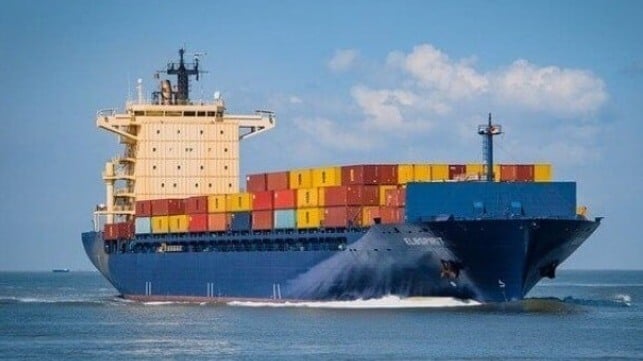Alphaliner: Scrapping Unlikely to Solve Containership Overcapacity

The imbalance in the container shipping sector is increasing as global demand recedes after a two-year surge. Despite the efforts of carriers by blanking sailings and combining routes, overcapacity is only expected to increase due to further declines in shipping volumes due to weak economies and the record orderbook for new containerships.
Alphaliner in its latest analysis of the container segment warns that the market is likely to be flooded with new capacity, especially in 2023 and 2024. They predict that using traditional standards, scrapping vessels at age 25 or even after 20 years, the carriers will be unable to offset the capacity increases.
“Demolition will be the main way to cut supply and mitigate overcapacity risks,” writes Alphaliner, “but it remains to be seen how much of the fleet could effectively be torched.” Their analysis shows that the average age of the global container fleet is below the normal thresholds and further with market trends in the past few years the oldest ships are also the smallest in capacity.
Carriers have already begun to take some steps to reduce capacity. Early in October, carriers idled 25 additional vessels with a capacity of over 110,000 TEU Alphaliner calculated in response to many trade routes where ships were sailing at between 70 and 80 percent of capacity. They reported the total of ships idled reached over 76 with a capacity of over 320,000 TEU. Worldwide, the number of containerships inactive due to being in shipyards for repairs as well as those laid up surpassed 1 million TEU, but Alphaliner points out that it is just over four percent of the total fleet capacity of more than 26 million TEU.
The current capacity inactive is nearly equal to the expected delivery of new ships in 2022. Last year and again this year, Alphaliner reports that 1.1 million TEU in capacity is being added to the global fleet each year. They, however, highlight that the total orderbook now stands at 7.3 million TEU representing an increase of more than 28 percent for capacity by the end of 2025. Based on current new building forecasts, they expect 2.3 million TEU to enter the market in 2023 and a further 2.8 million TEU in 2024.
“As the world edges toward what could be a lasting recession with an anticipated drop in seaborne trade, the market will likely not be able to absorb such a flood of newbuilding capacity,” forecasts Alphaliner.
With strong demand and high contract rates over the past two years, carriers have been employing the vast majority of ships and reluctant to send any for scrapping unless there was no alternative. The introduction of the new carbon intensity ratings might add an incentive as some of the older ships might become less financially viable, but Alphaliner’s analysis shows the age of the container fleet points to little relief using the traditional economic measures for longevity.

that matters most
Get the latest maritime news delivered to your inbox daily.
Alphaliner says the tonnage reaching age 25 or older currently has a capacity of just over 655,000 TEU. Lowering the age to 20 years would increase the number to over 1,100 vessels with a total capacity of 2.5 million TEU, which still is less than half the scheduled capacity from newbuilds. The idle fleet figure is already at a two-year high and might also have to rise to balance out the decline in shipping volumes.
They conclude that the imbalance is unlikely to be resolved by scrapping older ships. They expect the overcapacity will continue which has led industry analysts to forecast continued downward pressure on rates.
